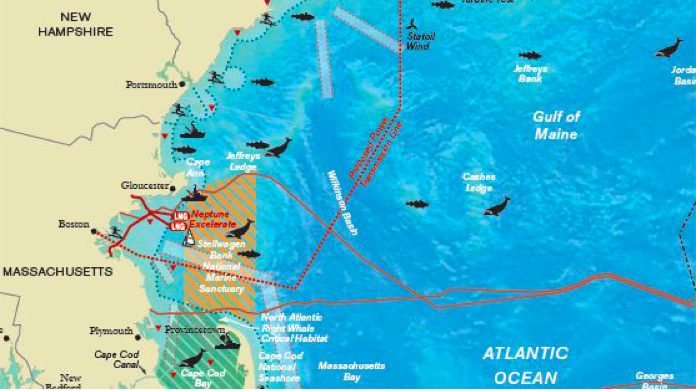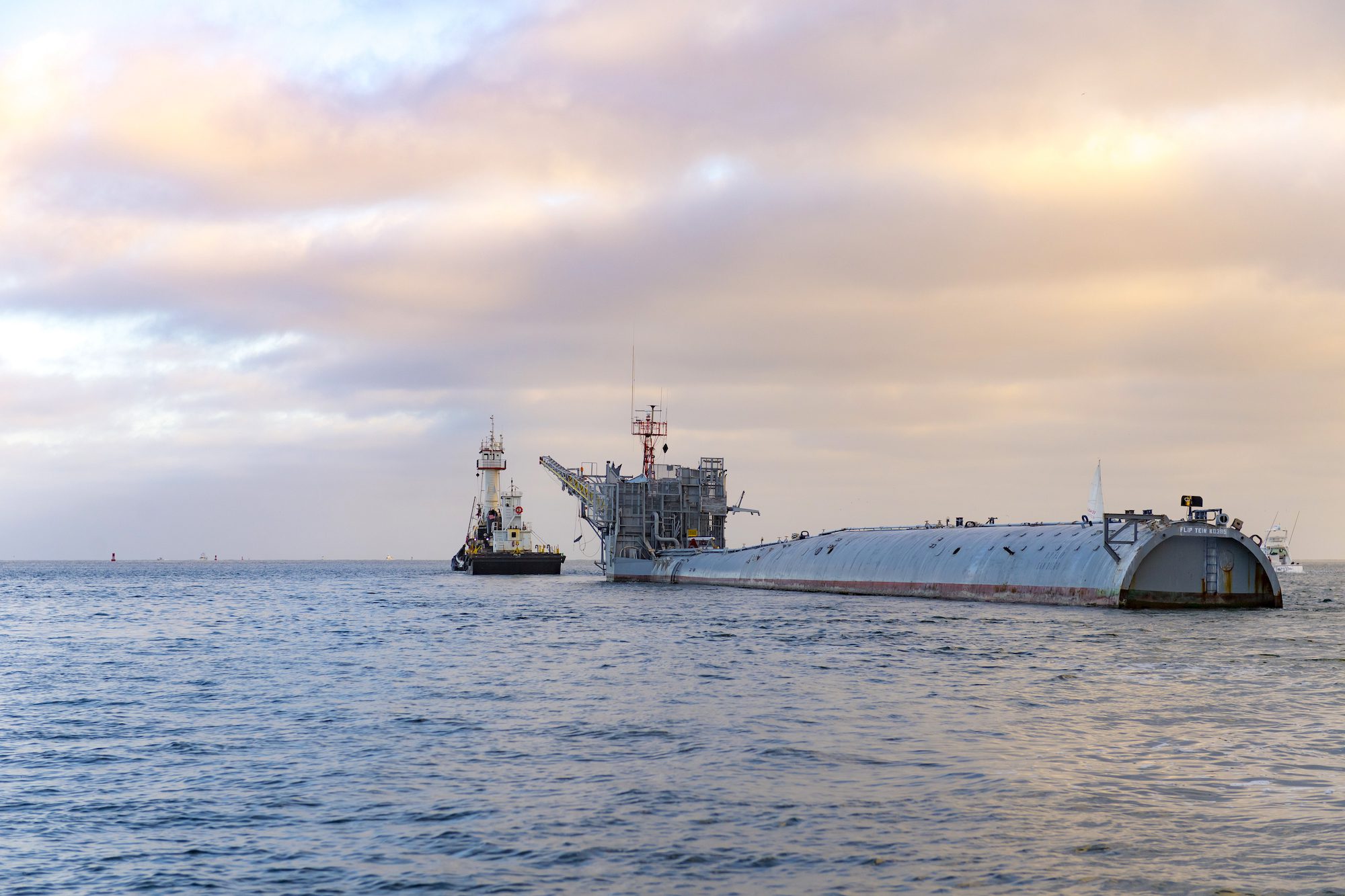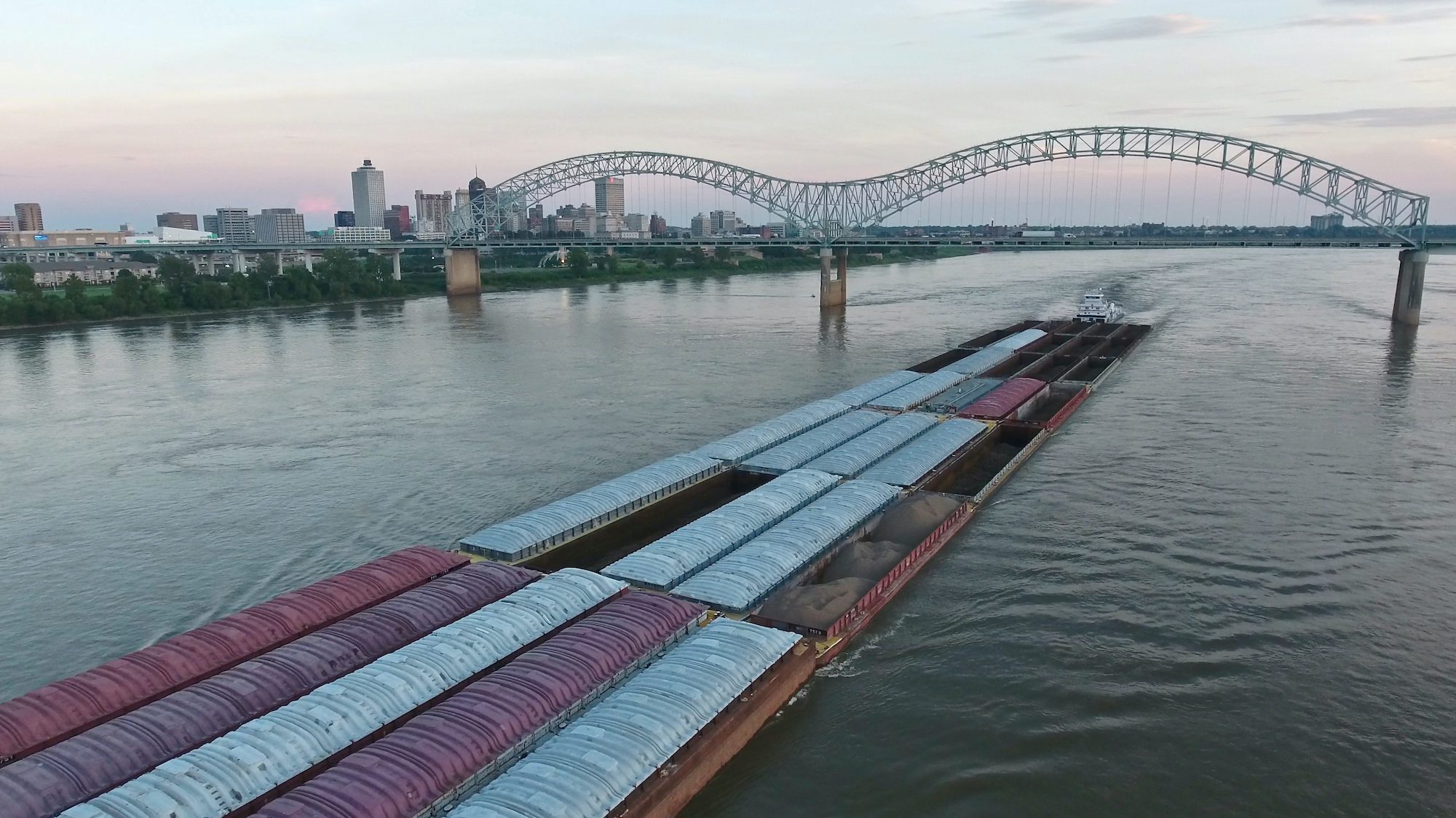Credit: New England Ocean Action
By Susan Olcott,
This New Year comes with new opportunities – as well as the potential for conflicts – in the open ocean.
In 2013, the US federal government will offer competitive lease sales for offshore wind farms in the waters off of Virginia, Massachusetts and Rhode Island. Considering the impact these sites could have on existing ocean industries, like shipping lanes or port traffic, the need for coordination and collaboration is vital. The National Ocean Policy aims to address those concerns.
The Policy – which was adopted in 2010, with an implementation plan expected soon – provides guidance in making decisions that will protect the United States’ ocean, waterways and coastlines. More than 20 federal agencies and over 140 laws address our coasts and the ocean, often in competing and conflicting ways. The policy improves collaboration and coordination and empowers the states to have a greater say in federal decision-making.
The Policy will create an ocean atlas with information on ocean uses and resources, providing information to state, tribal and federal agencies, as well as ocean users and the public, in a transparent manner. It also recommends a hands-on process to enable stakeholders to help make smart decisions about important ocean and coastal resources.
Some regions are already moving forward toward implementation.
The New England Regional Planning Body (RBP) met in November for the first meeting of its kind. This group, along with other regionally-based groups that would be established, includes representatives from state agencies, tribes, the regional fisheries management council and local governments, and will work with stakeholders and the public to gather information and, where relevant, develop plans.
Mariners are encouraged to join in the engagement process.
In 2010, 77 percent of U.S. imports— a total of $1.9 trillion in value— arrived via ports. Given the importance of the maritime industry on the economy, the Policy aims to maximize economic benefits while safeguarding the jobs that depend on a healthy marine environment. Access to comprehensive data can lead to better business decisions and provide companies greater regulatory certainty and efficiency that may enhance your ability to attract investors. Emerging industries, in particular, need to find locations to operate that minimize conflicts with other users.
Where do whale migration routes intersect with shipping lanes? How will a possible wind farm location impact a local port? These are questions that the maritime industry need to know to function at their best, and the National Ocean Policy aims to provide that information.
The National Ocean Policy can also present new opportunities by reducing operational costs. For example, ports need to dredge for ships to travel safely. At the same time, sediment is needed for habitat restoration projects. Instead of incurring costs to dispose of dredged material while paying for restoration material, coordinated planning could address both of these needs with a win-win solution.
As Kathleen Broadwater, Deputy Executive Director of the Maryland Port Administration, noted in a briefing held last year on the coastal economy, deep-water seaports serve as the poster child of coastal zone management in its effort to seek balance between ecological protection and economic development, and exhibit the value of coordinated management to maintain the nation’s economic vitality.
Susan Olcott lives in Brunswick, Maine and is Stakeholder Manager, Coastal and Marine Spatial Planning for the Ocean Conservancy. For more information and to receive updates on regional planning, please contact: [email protected].
Unlock Exclusive Insights Today!
Join the gCaptain Club for curated content, insider opinions, and vibrant community discussions.

 Join The Club
Join The Club











